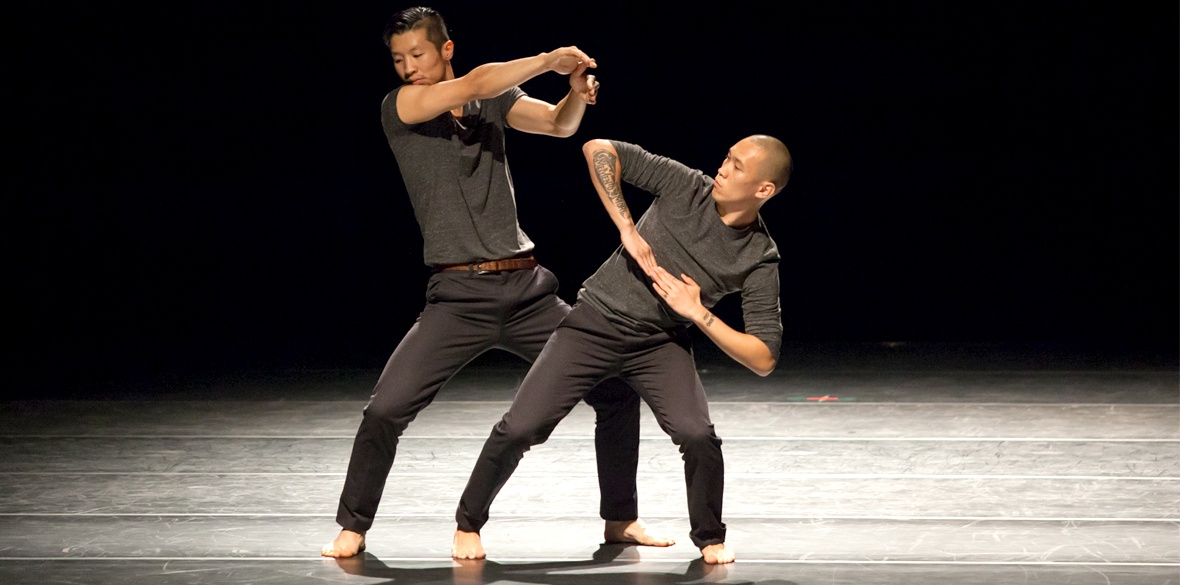This is the last article you can read this month
You can read more article this month
You can read more articles this month
Sorry your limit is up for this month
Reset on:
Please help support the Morning Star by subscribing here
SIGA
The Place, London
AFTER so many months of Covid-enforced privation, I shared the audience’s palpable pleasure at being back at The Place, London’s deliberately inexpensive centre for international experimental and innovatory modern dance.
Its usual friendly, unpretentious ambience from staff and audience was dominated by the young, some of whom appeared to have arrived fresh from the centre’s dance class or rehearsal.
It is this proximity of dancers, students and teachers among the audience which distinguishes The Place from London’s other modern dance venues.
The Korean Company SIGA did not disappoint. The small company’s name is an acronym of the Korean word “sinabro” which means “little by little,” and this self-effacing but determined sense of purpose permeated the choreography, staging, music and performance.
Staged minus backdrop or props on the black, expertly lit stage, nothing distracted from the company’s six performers. Two male dancers dressed in loose, black trousers and short-sleeved T-shirts emerged from the evanescent fog of dry ice, top-lit by a multitude of tiny star-like ceiling spotlights. One imposingly tall and charismatic dancer contrasted with his smaller, dynamic and fiercely competitive partner as they engaged and disengaged with jerky, geometric movements as if fighting aggressively, to the sound of Bluchan’s insistent drumming.
The choreography’s powerful, masculine physicality and bony angularity, overtly rejected classical ballet’s measured gracefulness.
A sudden radical change to a slow, tender duet performed in silence was both welcome and surprising. The two dancers supported and held each other with comradely care, which melted into humour as the smaller dancer mimed winding himself upwards cartoon-like, in an attempt to reach his companion’s impressive height. This was followed by the two dancers throwing themselves around the stage like demented teenagers, seemingly defying the possible bodily harm.
The show ended with a speculator feat of endurance as these two dancers were gradually joined by the rest of the small company of six to perform a long, rhythmic, mesmeric trance-like dance.
Arms loosened from the shoulders and flaying backwards and forwards from the elbows, they took small on the spot jumps followed by low skips from one foot to the other, as in a shamanic trance. Seemingly never ending, this possibly cathartic feat of endurance provided a breathtaking finale.
Modern Korean dance sprang from the influence of the American pioneer Martha Graham on Yook Wansoon’s department at Ewha University in South Korea, as part of the US’s influence on this country’s culture.
Founded with the intention to “draw connections between their lives and the people around them” SIGA’s dancers bring their own ideas and interests to their works, thereby challenging the traditional and still all too prevalent notion that dancers are physically expert but mere interpreters of other people’s thoughts.
Often performed facing the back of the stage rather than facing the audience and always with impassive facial expressions, SIGA’s technically impressive performance stressed dance’s potential for communication through the body and movement devoid of overt emotional appeal.
Yet I found it difficult to engage with SIGA’s emotional reserve despite being impressed by their physical prowess.










